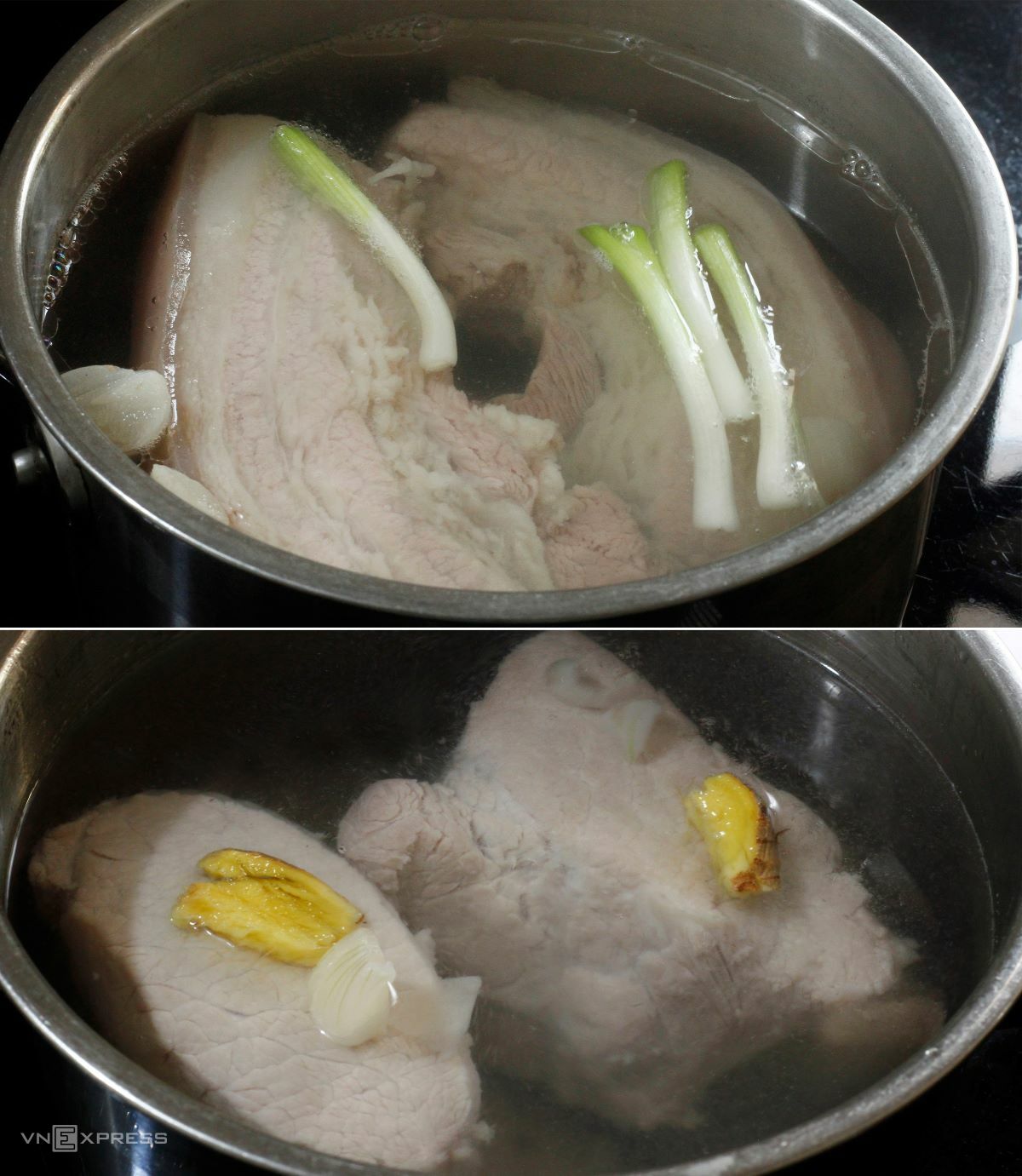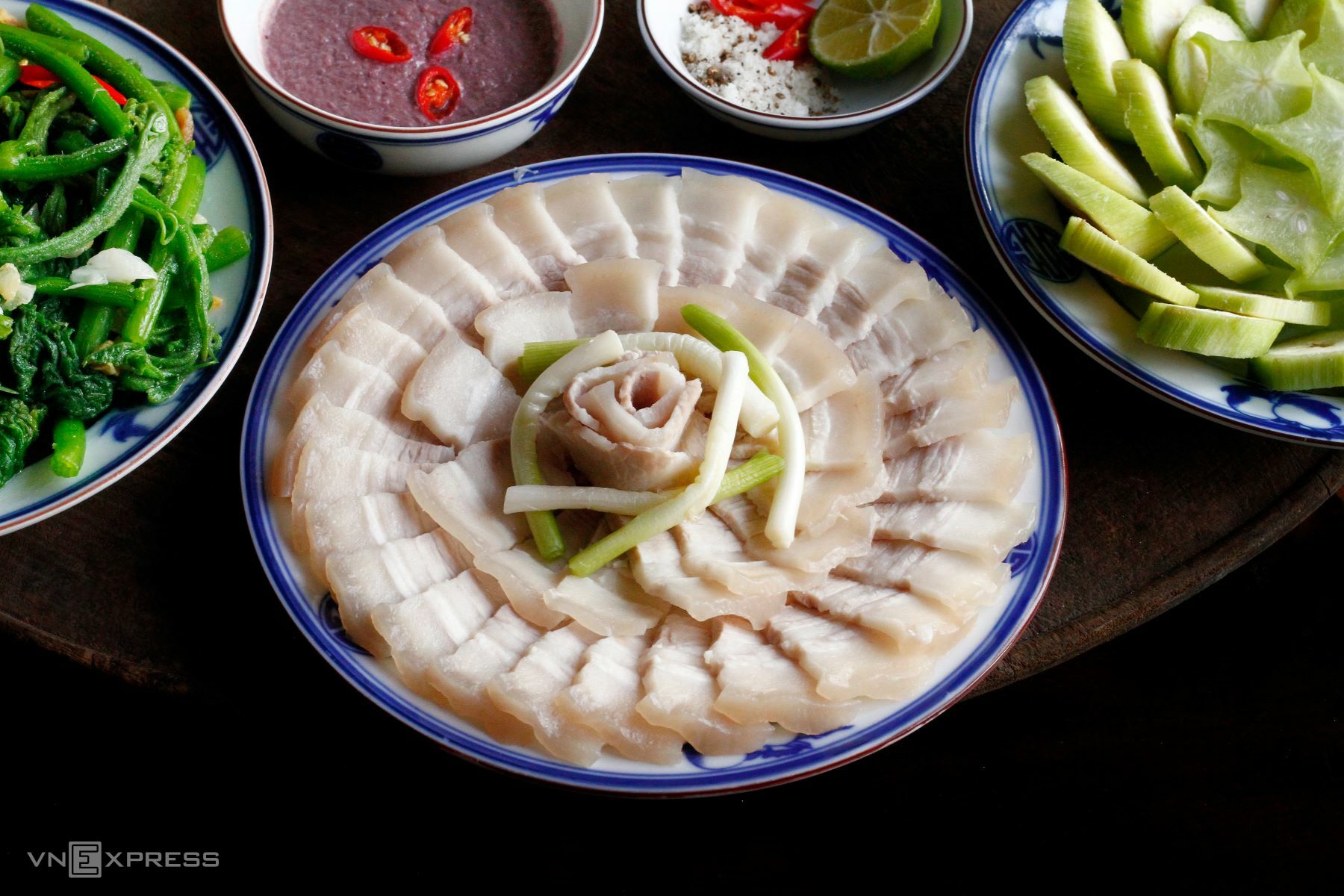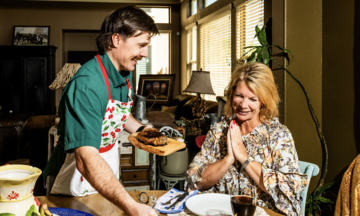Western chefs also use this "manual thermometer" to check the doneness of meat.
Some experienced home cooks share another method: observing the pork floating in clear water. As the meat cooks, proteins coagulate, causing the fibers to contract, making the meat lighter and causing it to float. This method is simple, but not always accurate.
 |
Pork belly floats faster than lean meat. Illustration: Bui Thuy |
Scientifically, when boiling, heat transfers to the meat through convection and conduction. The outer surface of the meat is in contact with boiling water at 100°C, but it takes time for the heat to reach the core. Meanwhile, the proteins in the meat change at different temperature thresholds: myosin begins to solidify at 40-50°C, making the meat firmer; actin denatures at 70-80°C, determining the firmness; collagen in tendons and skin only truly softens at 68-80°C. When the meat floats, the outer layer may have contracted, creating air pockets and making the piece lighter, but the core may still be undercooked. Only when a chopstick inserted into the thickest part produces no pink juices (because myoglobin has not yet denatured) can you be sure the core has reached 70-75°C, a safe temperature for cooked pork.
Myoglobin, the red pigment in meat, is also a factor in determining doneness. When the core temperature is below 70°C, myoglobin retains its reddish-purple color, and the juices are reddish-pink. At 70-75°C, myoglobin turns grayish-brown, and the juices become clear. This explains the age-old wisdom of "no pink juices means the meat is cooked," which has a scientific basis.
The floating of the meat also reflects the density and structure of the cut. Pork belly, with its interspersed fat, floats quickly, while lean shoulder or butt, with its dense protein structure and higher density, floats more slowly. Even bubbles and fat clinging to the meat can cause it to float prematurely, misleading cooks who rely solely on observation. Therefore, relying only on the signs of floating meat and clear water can lead to premature removal of undercooked pork.
 |
Perfectly cooked pork belly is tender and sweet. Photo: Bui Thuy |
In addition to recognizing doneness, pre-boiling preparation is also crucial. Thoroughly washing and blanching the pork removes blood and easily coagulated proteins, resulting in clearer boiling water with less foam, making observation easier. Some families also soak the pork in diluted salt water to reduce cell fluid loss during cooking, helping the meat retain its natural sweetness and preventing dryness. This is based on the scientifically proven principle of osmosis.
Another tip is to utilize residual heat. After turning off the heat, let the pork rest in the pot for 10-15 minutes. This residual heat continues to spread to the core, cooking it evenly without making it dry. This is the principle of "carry-over cooking" in modern cuisine, a practice long employed in traditional cooking. This results in perfectly cooked slices of pork, with a light pink color, tender texture, and sweet flavor.
Bui Thuy












